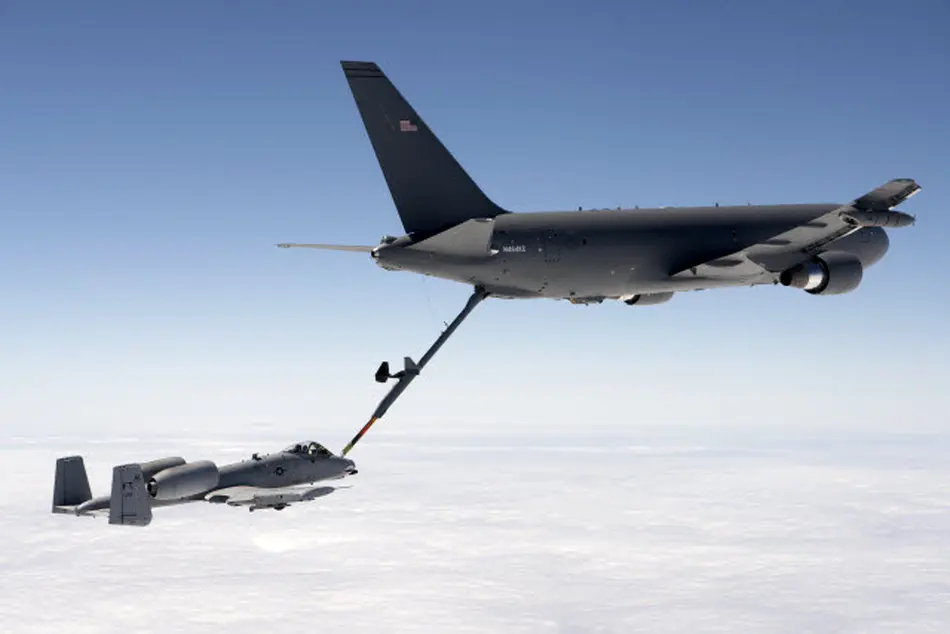Autonomous refueling considered for KC-46A upgrade plan
Although the delivery of the first KC-46A Pegasus is still months away, Boeing is about to launch a follow-on development programme, with potential upgrades including autonomous refueling, improved survivability and new communications systems, says the company’s programme manager.

Although the delivery of the first KC-46A Pegasus is still months away, Boeing is about to launch a follow-on development programme, with potential upgrades including autonomous refueling, improved survivability and new communications systems, says the company’s programme manager.
The US Air Force will signal a contract with Boeing for follow-development of the KC-46A later this year, Mike Gibbons told reporters during a 3 May media tour of the company’s Seattle area production and test facilities.
Boeing’s first task under the contract will likely be to work with the USAF to develop a five-year roadmap of potential upgrades for the new, 767-2C-based tanker fleet, he adds.
Among the top candidates for the roadmap is the addition of an autonomous refueling capability, allowing the KC-46A to refuel other aircraft without a human operator directly controlling the operation, he says.
“We are working on the side with the autonomous features so we can work on that with the next phase,” Gibbons says.
Autonomous refueling seemed a distant capability when the KC-46A contract was awarded to Boeing in February 2011, but the the field is rapidly advancing. The US Navy plans to award a contract by the end of the year for the MQ-25A Stingray, an unmanned aircraft designed to refuel manned, carrier-based fighters. Boeing’s Phantom Works and Autonomous Systems units are participating in the competition for the MQ-25 contract, Meanwhile, Airbus last year demonstrated an autonomous refueling system on the company’s A310 testbed.
In 2011, the USAF decided to take a more conservative approach to replacing a fleet of aging Boeing KC-135E tankers. Boeing had proposed a helmet-mounted display for the refueling operator, but the USAF preferred a more traditional console-based display. The USAF also required Boeing to allow operators to manually select the contrast and brightness levels for the display, rather than use software to select the scene automatically, Gibbons says.
The follow-on development contract puts autonomous refueling technology back on the table for the KC-46A. The aircraft is already equipped with several of the necessary features of such a system, including a camera-based remote vision system to visualize the receiver aircraft and a fly-by-wire boom with digitised flight controls.
As Boeing and the USAF embark on follow-on development, the company expects to evaluate additional sensors, such as LIDAR to augment the remote vision system and differential GPS to pinpoint the positioning between the refueling boom and the receiver aircraft, Gibbons says.
Source: flightglobal



